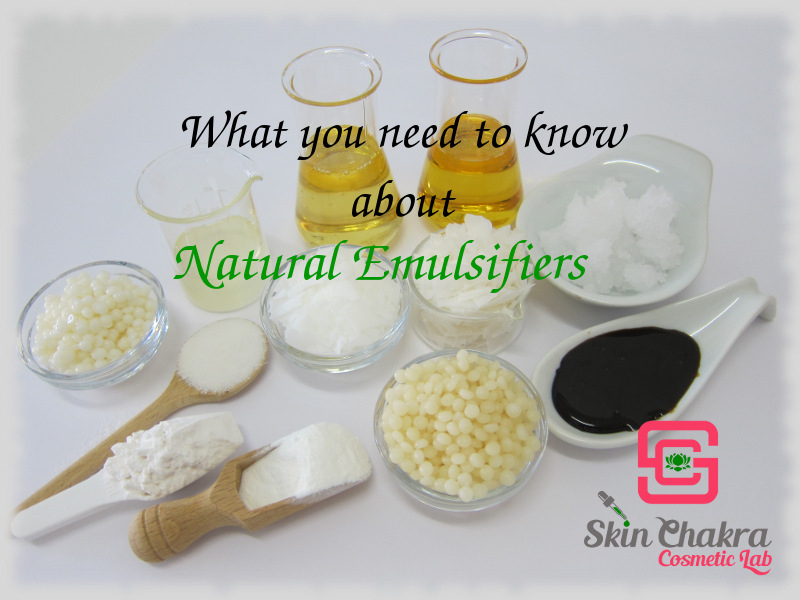ChatGPT said: What are emulsifiers in food formulations?
Emulsifiers: Trick Active Ingredients for Attaining Completely Combined Formulas
Emulsifiers play a crucial function in producing steady combinations of immiscible liquids, such as oil and water. Their unique residential properties enable them to reduce surface stress, which is essential for harmony in numerous formulations. Comprehending the distinctions in between synthetic and natural emulsifiers can affect product high quality significantly. As industries progressively seek to boost structure and life span, the option process for the best emulsifier becomes extremely important. What variables should be considered in this important selection?
Comprehending Emulsifiers: What They Are and Exactly how They Function
Although emulsifiers might feel like a straightforward addition to formulations, they play an important duty in maintaining mixtures of components that typically do not blend well, such as oil and water. These compounds work by reducing surface tension at the interface in between immiscible fluids, allowing them to blend even more uniformly. Emulsifiers have both hydrophilic (water-attracting) and lipophilic (oil-attracting) residential properties, which allow them to secure themselves at the boundary of both phases. By doing so, they create a protective obstacle that stops the beads of one fluid from coalescing right into larger masses, consequently maintaining a secure emulsion. The effectiveness of an emulsifier relies on its molecular framework, which affects its capability to stabilize mixtures. In different applications, from food products to cosmetics, emulsifiers ensure a constant texture and appearance, improving both performance and consumer charm. Their relevance can not be overstated in achieving well-blended solutions.
Kinds of Emulsifiers: Artificial vs. natural
Emulsifiers can be generally classified into 2 types: natural and synthetic, each offering distinct advantages and applications. All-natural emulsifiers, originated from plant or animal resources, include casein, lecithin, and gum arabic (emulsifiers). These emulsifiers are often favored in clean-label and natural products as a result of their marginal processing and biocompatibility. Their mild nature makes them ideal for delicate formulas, especially in food and cosmetics

On the various other hand, synthetic emulsifiers such as mono- and diglycerides, and polysorbates are manufactured via chemical processes. They are typically used in industrial applications as a result of their stability and efficiency in creating solutions. Synthetic emulsifiers usually display exceptional performance in extreme problems, such as high temperature levels or differing pH levels. The selection between natural and synthetic emulsifiers largely depends on the specific formula requirements, governing factors to consider, and consumer choices, affecting their efficient application in different industries.
Functions of Emulsifiers in Food and Aesthetic Solutions
The duty of emulsifiers extends beyond plain stabilization; they are basic in accomplishing the wanted rack, structure, and appearance life of food and cosmetic products. In food formulas, emulsifiers assist mix oil and water, creating smooth and consistent structures essential for sauces, dressings, and dairy items. They reduce surface area stress, enhancing the stability of solutions, which protects against splitting up and extends freshness.
In cosmetics, emulsifiers guarantee that ingredients, such as oils and water, mix flawlessly, supplying a positive feel and improving application. emulsifiers. They add to the product's thickness and spreadability, crucial for creams, products, and lotions. In addition, emulsifiers can encapsulate active components, improving their circulation Visit Website and performance in formulas. By regulating appearance and boosting sensory characteristics, emulsifiers play an important role in conference customer assumptions in both food and cosmetic markets, assuring items are not only attractive but likewise functionally reliable
Selecting the Right Emulsifier for Your Product

Additionally, the target application-- whether for food, cosmetics, or pharmaceuticals-- will influence the selection. For example, food-grade emulsifiers should abide by security guidelines, while aesthetic emulsifiers might require skin compatibility. Assessing variables such as HLB (Hydrophilic-Lipophilic Equilibrium) aids in anticipating emulsifier habits in details formulations. Inevitably, a comprehensive evaluation of both regulative considerations and useful needs is crucial to pick one of the most efficient emulsifier, guaranteeing the end product meets the desired high quality and security requirements.

Tips for Effective Emulsion Development and Stability
Accomplishing effective solution formation and stability calls for mindful focus to numerous essential elements. The selection of emulsifier plays a crucial function; it needs to be suitable with the oil and water phases to ensure efficient stabilization. Second, the ratio of oil to water need to be well balanced, as an inappropriate ratio can cause instability. Third, the mixing process ought to be regulated; high shear blending can aid achieve smaller bead sizes, improving security.
Temperature level also influences emulsion security; keeping suitable temperatures during formula stops early separation. Additionally, integrating stabilizers such as thickeners can even more boost thickness, decreasing the probability of phase splitting up. Finally, carrying out extensive security examinations after formula will assist identify prospective concerns, enabling for changes before last production. By sticking to these standards, formulators can accomplish reliable and regular emulsions that keep their preferred properties in time.
Regularly Asked Inquiries
Can Emulsifiers Be Made Use Of in Vegan Formulations?
Yes, emulsifiers can be made use of in vegan solutions. Numerous plant-based emulsifiers, such as lecithin from soy or sunflower, supply effective mixing without animal-derived ingredients, making them suitable for a range of vegan items.
What Prevail Allergens in Emulsifiers?
Common allergens in emulsifiers include soy, dairy, and eggs, as particular emulsifiers are derived from these resources. Furthermore, some individuals might respond to chemicals or ingredients utilized along with emulsifiers in numerous solutions.

Exactly How Do Emulsifiers Impact Rack Life of Products?
Emulsifiers improve item security by stopping splitting up of active ingredients, thereby prolonging service life. They reduce perishing triggered by microbial growth and oxidation, resulting in long term quality and continue reading this enhanced top quality in numerous browse around here food and aesthetic formulas.
Exist Any Type Of Health And Wellness Worries Connected With Emulsifiers?
Study indicates potential wellness problems related to emulsifiers, including digestive tract microbiome alterations and inflammation. While governing bodies generally regard them risk-free, continuous studies remain to check out long-term results on wellness and overall well-being.
Can Emulsifiers Improve Taste or Scent in Formulations?
Emulsifiers can improve flavor and scent in formulas by improving active ingredient dispersion and security. This results in a more consistent item, enabling tastes to blend properly, inevitably causing a much more enjoyable sensory experience for customers.
Emulsifiers might seem like an easy addition to solutions, they play a crucial role in maintaining blends of active ingredients that usually do not blend well, such as oil and water. In food formulations, emulsifiers assist blend oil and water, developing smooth and consistent textures important for sauces, dressings, and milk products. Food-grade emulsifiers need to comply with security policies, while aesthetic emulsifiers might require skin compatibility. Usual irritants in emulsifiers include soy, dairy products, and eggs, as specific emulsifiers are acquired from these resources. Emulsifiers can improve flavor and fragrance in formulations by boosting ingredient diffusion and stability.